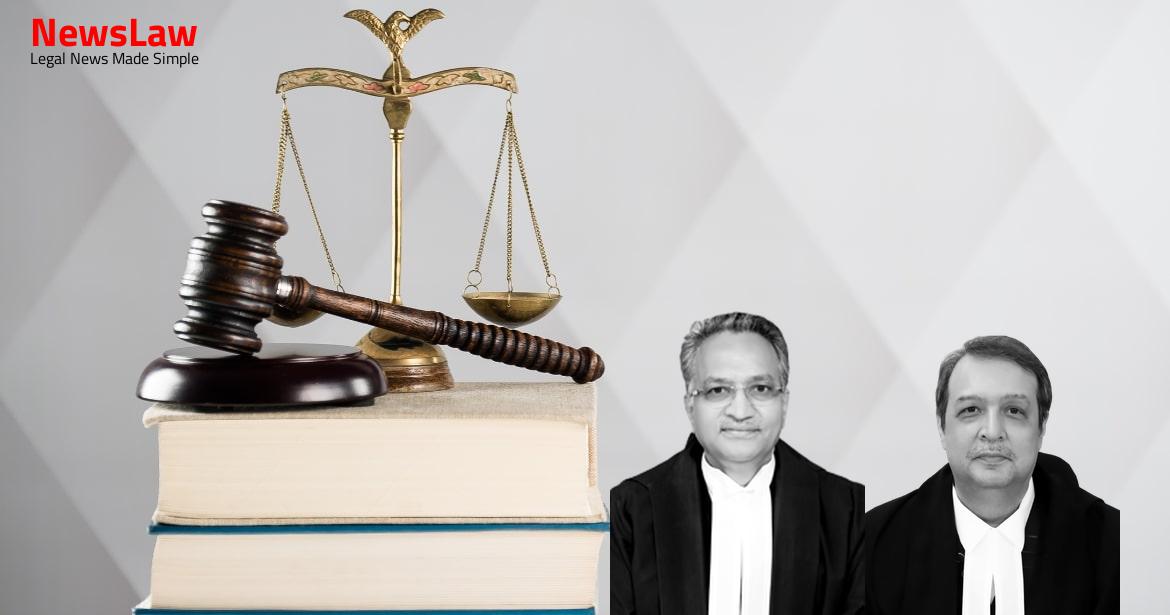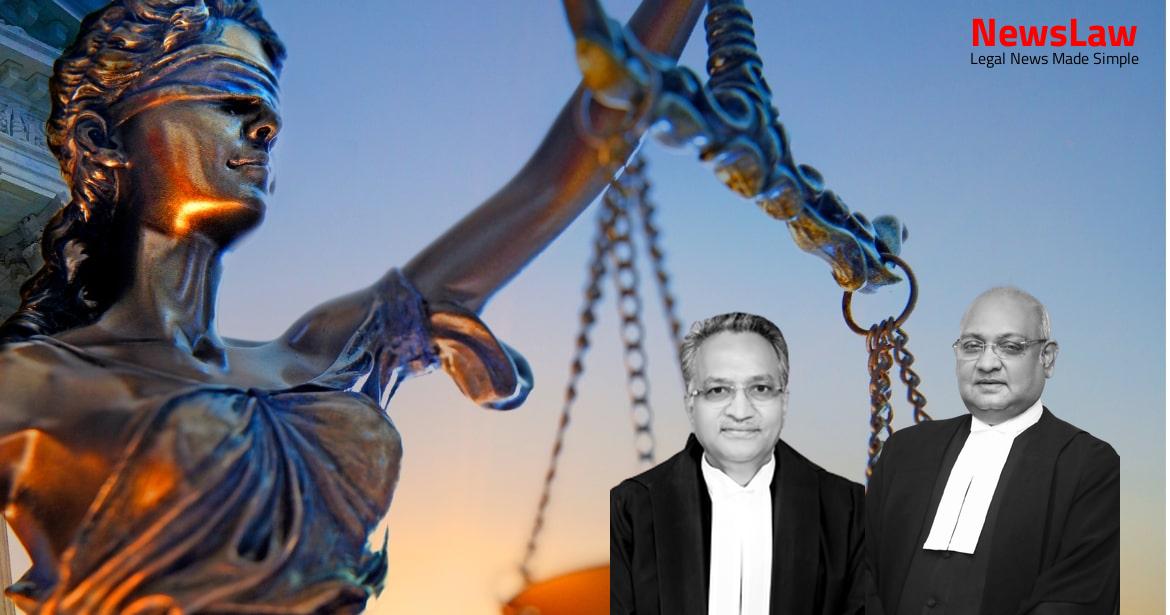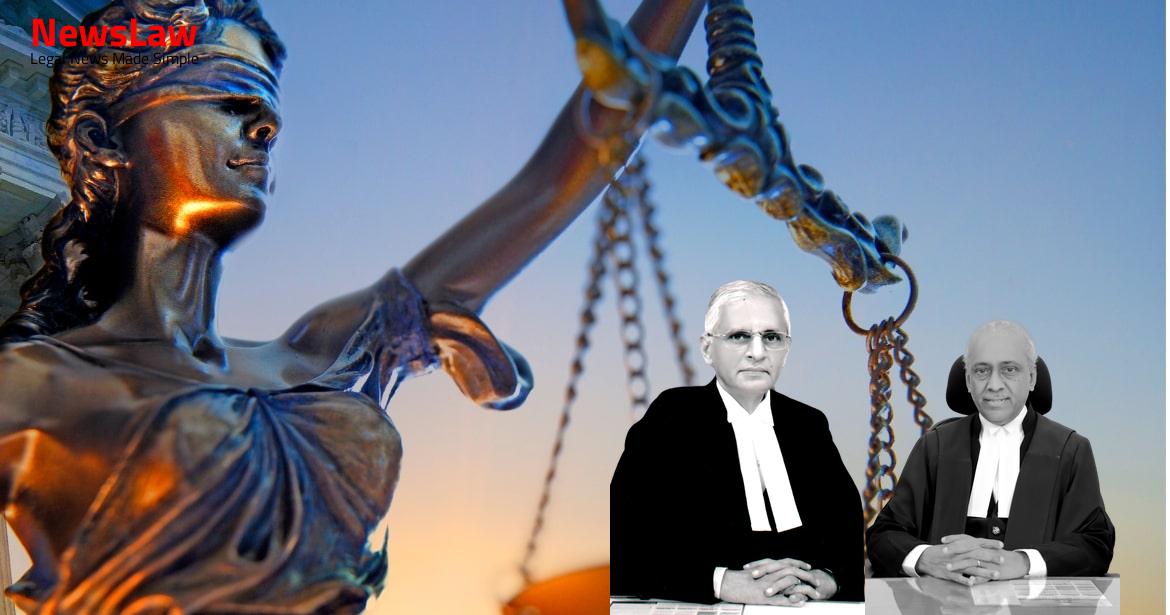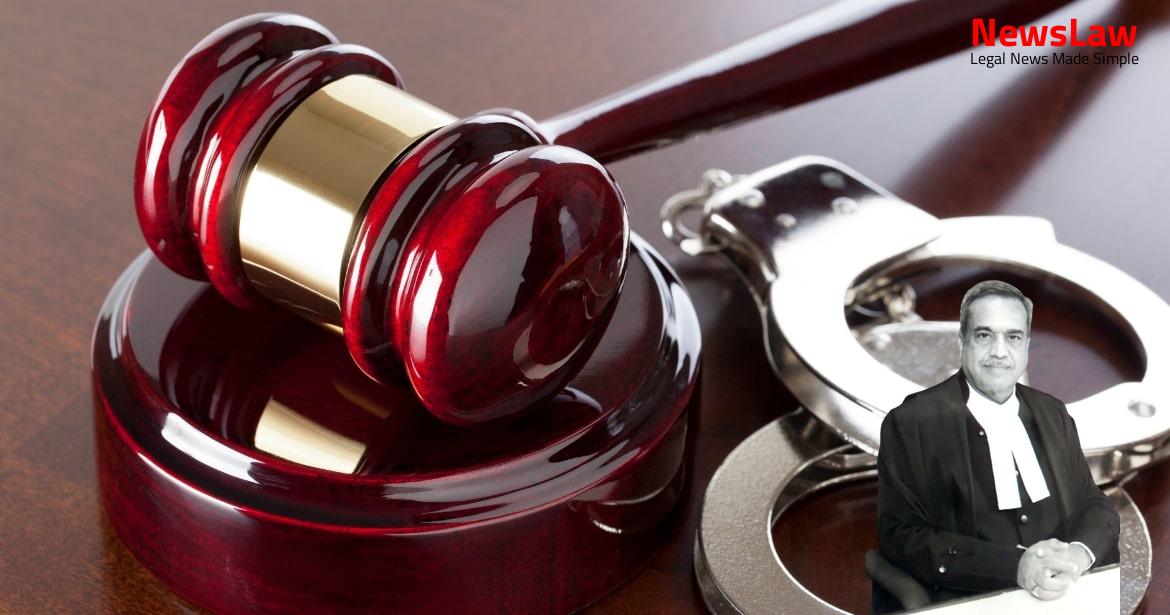Delve into the complexities of legal analysis in criminal cases, focusing on the discovery panchnama and the assessment of circumstantial evidence by the court. The interpretation and application of relevant legal provisions play a pivotal role in determining the strength of prosecution’s case. Witness credibility, conduct relevance, and the interplay of various factors in establishing guilt or innocence are key aspects scrutinized by the courts. This blog highlights the intricate legal reasoning behind court judgments in criminal appeals.
Facts
- The discovery panchnama of the weapon of the offence, a hammer, was drawn on 16.12.2006 under Section 27 of the Evidence Act
- The trial court found the appellant guilty based on the oral testimony of eyewitnesses PW-1 Nandlal and PW-8 Udaysingh
- The quarrel between the appellant and the deceased, Mahankal, occurred near the ticket window of Vile Parle Railway Station on 10.12.2006
- The appellant was working as a labourer in the Vile Parle area where the deceased and appellant knew each other
- The hammer, with human blood and hair, was sent for chemical analysis
- The first informant, PW-1 Nandlal, witnessed the appellant walking away with the hammer after the incident, where the appellant admitted to killing Mahankal
- The post mortem report revealed fatal injuries on the deceased caused by an assault with the hammer
- The appellant challenged the judgment and conviction by filing Criminal Appeal No 449 of 2014 in the High Court of Bombay.
- The High Court upheld the findings of the trial court after reevaluation of the evidence and dismissed the appeal on 10.07.2015.
- The trial court considered the discovery of the hammer at the appellant’s instance as incriminating evidence leading to the conviction.
- The appellant was sentenced to life imprisonment with a fine of Rs. 1,000/- and further rigorous imprisonment in default.
Arguments
- The appellant’s counsel argued that the courts erred in believing the two eye witnesses, labeling them as unreliable.
- The delay in lodging the FIR and the unnatural conduct of one witness were highlighted as reasons for doubt.
- The counsel disputed the reliance on the discovery of the weapon of offense as evidence against the appellant.
- The State’s counsel opposed the appeal, asserting the correctness of the lower courts’ judgment.
- The appellant’s counsel prayed for acquittal, emphasizing the oral testimony of the witnesses and the weapon’s discovery.
- The State’s counsel urged for dismissal of the appeal, citing no merit in overturning the judgment.
- The scope and application of Article 136 of the Constitution regarding the Court’s power in criminal appeals were discussed.
- Precedents were cited to illustrate circumstances where the Supreme Court can interfere with findings of fact in criminal cases.
Analysis
- The scope and ambit of Section 27 of the Act were explained in Phulukuri Kottaya v. Emperor, emphasizing that the fact discovered includes the place and the accused’s knowledge related to the object produced.
- Evidence from PW-4 & PW-10 revealed the appellant’s statement indicating the weapon’s location. However, the Court found the prosecution’s evidence unreliable and unsafe.
- The power of the Supreme Court under Article 136 is plenary, without qualifications in the article itself.
- In cases of accused persons, statements are admissible only if they relate to the discovery of a relevant fact previously unknown.
- The evidence should meet the reliability and acceptability test to be considered in a decision.
- Circumstantial evidence needs to meet a high standard, especially in cases depending wholly on circumstantial evidence.
- The conduct must have a close nexus with a fact in issue to be admissible.
- The Supreme Court normally does not reappraise evidence in criminal appeals under Article 136, except in specific circumstances like errors of law, natural justice, or perversity in the findings.
- The word ‘conduct’ in Section 8 does not include statements unless they accompany and explain acts beyond statements.
- Section 27 of the Act requires specific conditions for its applicability, including discovery of a fact in consequence of information received from the accused.
- In the absence of exact words attributed to an accused, the trial court should not rely solely on the circumstance of weapon discovery for a serious offense like murder.
- Evidence of conduct may be relevant under Section 8 of the Act but should not be the sole basis for conviction.
- A person in custody’s information about a concealed item should directly lead to the item’s discovery for admissibility under Section 27.
- Section 8 makes the conduct of an accused relevant if it influences or is influenced by any fact in issue.
- The law categorizes accused persons into two classes based on their detention status.
- The appreciation of ocular evidence is a challenging task that requires careful scrutiny.
- Witnesses may not have perfect memory and may recall events with variations.
- Minor discrepancies in witness testimonies should not lead to outright rejection of evidence unless they significantly impact credibility.
- The conduct of an accused can be considered along with other evidence in criminal cases.
- The power of intervention under Article 136 should be reserved for exceptional circumstances or matters of public importance.
- The significance of reading over the panchnama before exhibition to ensure its accuracy and reliability.
- The importance of corroborative evidence and substantive evidence in criminal trials.
- The need to consider the context and circumstances surrounding witness statements for a fair assessment of their credibility.
- The role of panch witnesses and their testimonies in discovery panchnamas.
- The necessity for consistency in legal procedures and adherence to the correct legal standards in handling evidence.
- When the conduct of any person is relevant, any statement made to him or in his presence and hearing, which affects such conduct, is relevant.
- The conduct of the accused alone, though relevant under Section 8 of the Act, cannot form the basis of conviction.
- After analysis, it was concluded that there is no merit in the present appeal.
Also Read: Supreme Court Judgment:
Supreme Court Upholds Benefit of Input Tax Credit in Uttar Pradesh Value Added Tax Act 2008
Decision
- The appeal failed and is dismissed
Case Title: SHAHAJA @ SHAHAJAN ISMAIL MOHD. SHAIKH Vs. THE STATE OF MAHARASHTRA (2022 INSC 725)
Case Number: Crl.A. No.-000739-000739 / 2017



